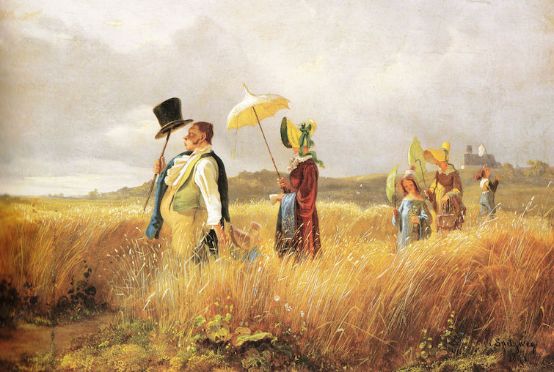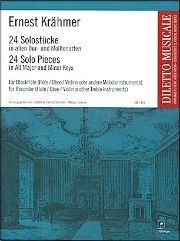Not just for walking stick virtuosos
Selection for soprano recorder from the "100 Exercises for Csakan" by Ernest Krähmer (1795-1837): a school of fluency, but also of musicality.

In one of the most famous paintings of the Biedermeier period, Carl Spitzweg's Sunday walkthe father holds up his top hat with his walking stick. It's easy to imagine him taking a csakan out of it at the next idyllic resting place and blowing a pleasant little song on it. Around 1800, this recorder built into a walking stick came into fashion, and Ernest Krähmer, oboist in the Viennese court orchestra, became its most important virtuoso and teacher. His entire printed compositional oeuvre is dedicated to the csakan.
Krähmers 24 solo pieces in all major and minor keys from 1837 are gems of early Romantic original music for recorder. In terms of content, they represent the musical repertoire of Vienna at the time, but in terms of technique they are in line with the instrumental schools that had become fashionable. Sophisticated etude works were no longer reserved for chordal instruments. The use of keys with more than three or four accidentals, which were unfavorable in terms of fingering technique, was intended to practice fluency, difficult fingering combinations or scales and triads through all keys, while also training musical taste.
Krähmer went with his 100 practice pieces for the csakanThey contain detailed instructions on articulation, sound and dynamics and place high demands on the playing of the soprano recorder, not only because of the use of all the accidentals and the large size of the pieces.
Ernest Krähmer: 24 solo pieces in all major and minor keys for recorder (flute/oboe/violin or other melody instruments), edited by Helmut Schaller and Nikolaj Tarasov, DM 1491, € 15.95, Doblinger, Vienna 2016









